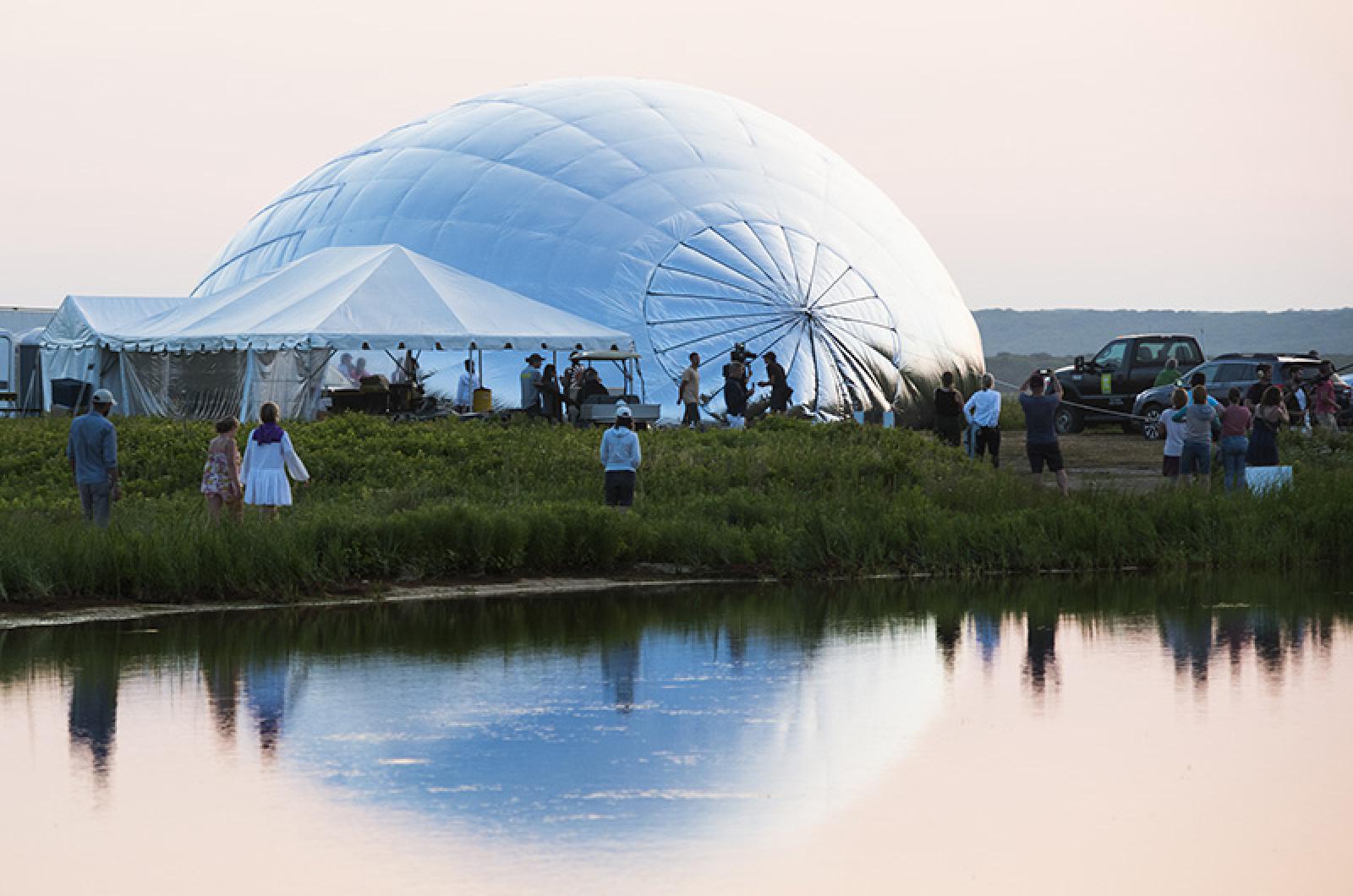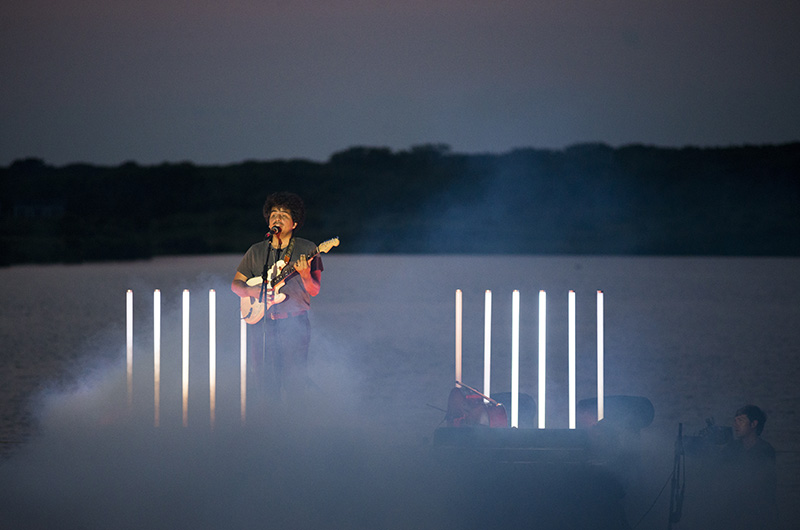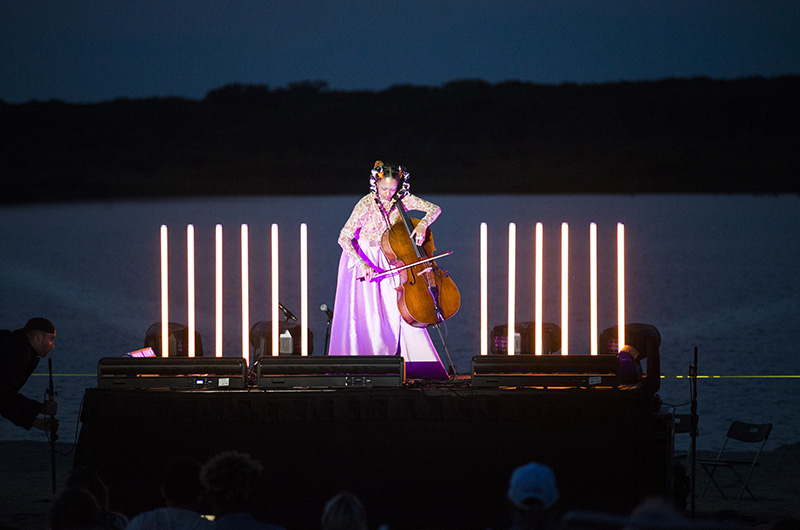Over the weekend, hundreds gathered at the beach at Long Point Wildlife Refuge in West Tisbury to see a much-anticipated reflective hot air balloon and the series of cultural events that would accompany it. But due to a steady sea breeze, the New Horizon art installation hosted by the Trustees of Reservations never fully and continuously inflated.
The associated events still went on, with talks on creativity and climate change, appearances by the installation’s artist, Doug Aitken, and performances from musicians including Chadwick Stokes of Dispatch and cellist Kelsey Yu.
On Sunday the crowd watched eagerly, iPhones raised, for the moment the silver orb might lift into the air like the huge inverted raindrop on the event’s website. It did not. Its non-presence — the closely monitored swelling, shrinking and ultimate disappearance of the balloon as the sky darkened — became another kind of metaphor.
“We are all sitting in a place that will not exist not long from now,” said Dr. Spencer Glendon, an economist and senior fellow at the Woods Hole Research Center. The theme of Sunday’s event was The Future of Climate, and Mr. Glendon gave a talk standing on a stage on the beach between Long Cove Pond and the ocean. The setting was idyllic—picnic blankets, bare feet, warm air—but the message was stark. The world as we know it will soon disappear.
“This is the perfect place to consider the past and future,” Mr. Glendon said. “Recall how 20,000 years ago this was ice and the ocean wasn’t there. The ice that’s melting because of CO2 will make that ocean come right over here.”
Both Mr. Glendon and Woods Hole Research Center senior scientist Dr. Chris Neill, who also spoke, took the long view, touching on milestones in human progress and how they have affected the earth’s systems. Human beings have existed as a species for about 200,000 years, they have had language for 50,000 years, agriculture for 10,000 years. Just 200 years ago, the best fuel humans had for creating light came from the heads of slaughtered whales.
Mr. Neill said that half of the carbon dioxide emissions humans have put into the atmosphere has been released since 1989. Since 1900, the global temperature has increased about one degree.
“This is on us. This is not on people burning coal in Glasgow in the 1800s. It is on us,” he said.
He said of the five known mass extinctions in Earth’s history, four were caused by heightened levels of carbon dioxide in the atmosphere that raised the temperature less than five degrees.
“Right now we are increasing the CO2 concentration 10 times faster than in any of those mass extinction events,” Mr. Neill said. “I look at this and I say to myself as an earth systems scientist, if this isn’t an existential crisis, I don’t know what the hell is.”
As he spoke, two children played in the shallows of the pond behind the stage. One held a small net, weighted with a tiny catch. The other lay on his stomach in the water, just his head above the surface, face pink in the light of the sinking sun. The boy on shore waded into the water, his shorts eventually getting soaked. They passed the net back and forth, oblivious to the presence or absence of the balloon and the fate of the ribbon of sand between the pond and the sea.






Comments (1)
Comments
Comment policy »